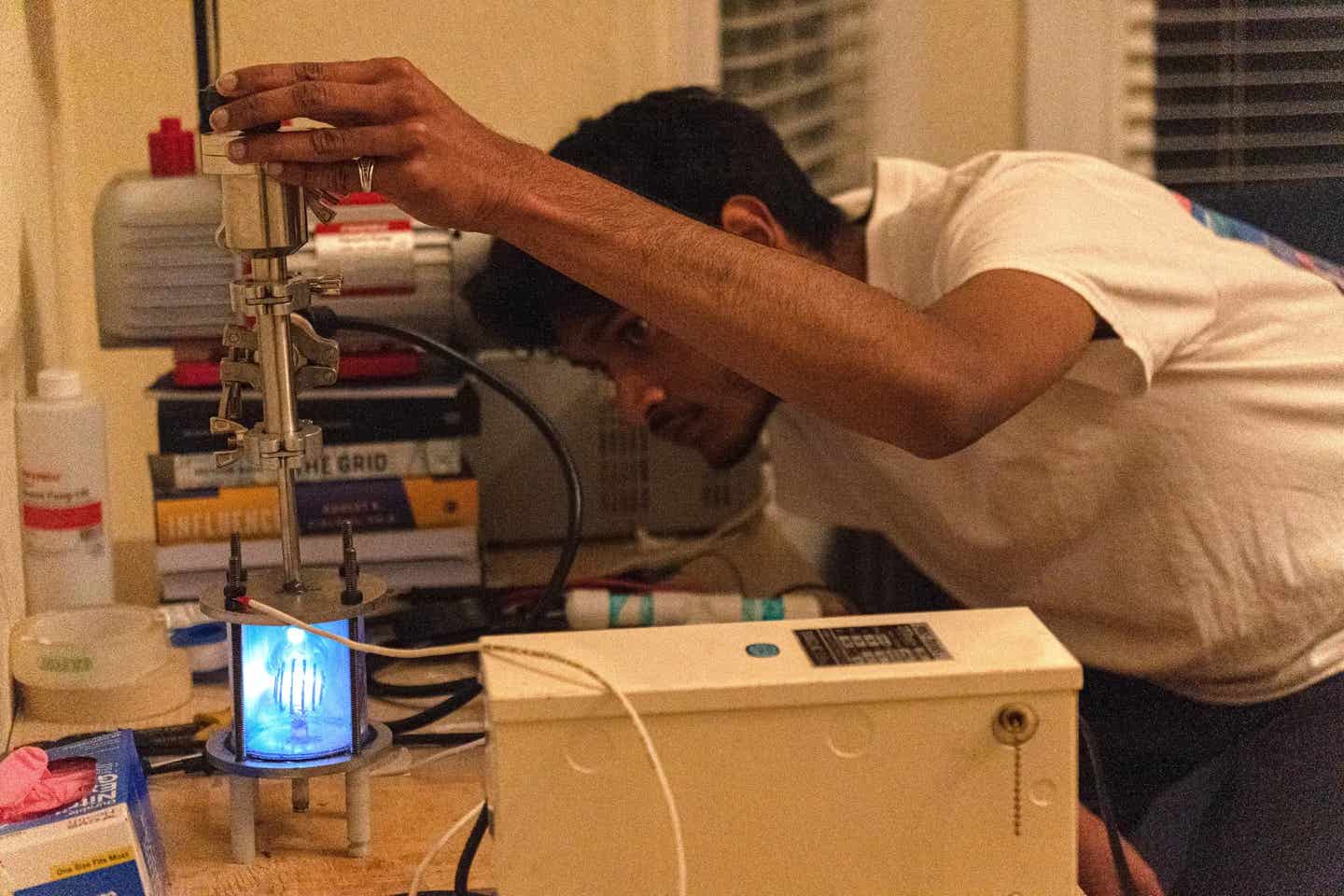Student built a $2,000 working fusion reactor in their bedroom
In just four weeks, Hudhayfa Nazoordeen created a homemade fusor on a budget of only $2,000 using parts sourced online.

Hudhayfa Nazoordeen, a math major from the University of Waterloo, created a mini fusor using parts he bought online. (CREDIT: Hudhayfa Nazoordeen)
A student’s small bedroom has become a hotspot for nuclear fusion experiments. With no fancy lab or deep-pocketed sponsors, the work is entirely driven by curiosity and grit. Hudhayfa Nazoordeen, a math major at the University of Waterloo, built a functioning plasma reactor from scratch—right on campus.
In just four weeks, Nazoordeen created a homemade fusor on a budget of only $2,000. The parts came from online retailers, some of them meant for signs and plumbing, not science. Though it hasn’t yet achieved nuclear fusion, the project is turning heads in the fusion community for its clever approach and relentless trial-and-error.
His reactor was modeled after a tokamak, a well-known design in fusion science. But rather than rely on lab-grade tools, he used a 12kV neon sign transformer to power the device. The reactor reached a key milestone: generating plasma, the hot, charged state of matter needed for fusion.
Nazoordeen had no background in building hardware when he started. “The first week was just me trying to figure out what I even needed,” he said. He tracked down parts from suppliers like McMaster-Carr, then spent the second week assembling the main chamber and a rectifier circuit. By week three, he’d installed the transformer and wired it into the system.
Midway through the third week, progress slowed. The vacuum system proved to be the most frustrating part. Fusion demands extremely low pressure, and even the smallest leak can cause failure. Nazoordeen had to learn the hard way how to seal microscopic gaps with painstaking precision.
“This was by far the most annoying part of this project,” he posted on X, the platform formerly known as Twitter. After multiple sealing attempts, he finally achieved a vacuum of 25 millionths of an atmosphere. That milestone pushed the fusor one step closer to fusion—and marked a major personal win in a journey powered more by will than by money.
Related Stories:
To monitor and control the vacuum, Nazoordeen used an MKS-901p transducer, ensuring that pressure levels remained low enough for potential fusion reactions to occur. Although his reactor didn’t quite reach the point of inducing fusion—meaning it didn’t produce neutrons—it still represents a remarkable achievement for such a small, home-built device.
A significant part of Nazoordeen’s success was thanks to the assistance he received. Other engineers at his university offered their expertise, but a surprising helper was Claude 3.5, an AI chatbot developed by Anthropic. Nazoordeen described how the chatbot was instrumental in interpreting complex datasheets, helping him troubleshoot various aspects of the build.
“I fed Claude all my datasheets, and it helped a ton with this,” Nazoordeen noted, underscoring the increasingly important role that AI plays in modern scientific and engineering projects.
While Nazoordeen’s current fusor didn’t achieve full fusion, he remains hopeful. He’s waiting on additional funding to further develop the project and build what he calls the “full fusor.” More advanced reactor concepts or significant engineering adjustments could push his design into neutron-producing territory, but that remains a future goal.
Nazoordeen’s project draws inspiration from similar efforts by other young innovators. One notable example is Olivia Li, an engineer from the University of Toronto. Last year, she made headlines for constructing her own fusion reactor in her New York City apartment, using deuterium gas extracted from heavy water. Like Nazoordeen, Li tackled the complex challenge of building a fusion device in a non-traditional setting and with limited resources.
Li expressed admiration for Nazoordeen’s work, emphasizing how rare it is for someone to take on such a project and see it through.
“A lot of people I’ve talked to have been excited about building a fusion reactor,” Li shared in a post on X. “Hudzah is the only person to have actually went on and executed!” She went on to provide a link to a write-up aimed at helping anyone else interested in building their own fusor at home.
Fusion remains an incredibly difficult technology to master, even for the world’s top labs and researchers. Yet, efforts like those of Nazoordeen and Li demonstrate the growing accessibility of this field to independent researchers.
While the road to producing practical, sustainable fusion energy is still long, such grassroots projects offer hope that the future of energy innovation might not be limited to the wealthy and powerful. Instead, it could be fueled by creativity, persistence, and even a bedroom workshop.
Note: Materials provided above by The Brighter Side of News. Content may be edited for style and length.
Like these kind of feel good stories? Get The Brighter Side of News' newsletter.



